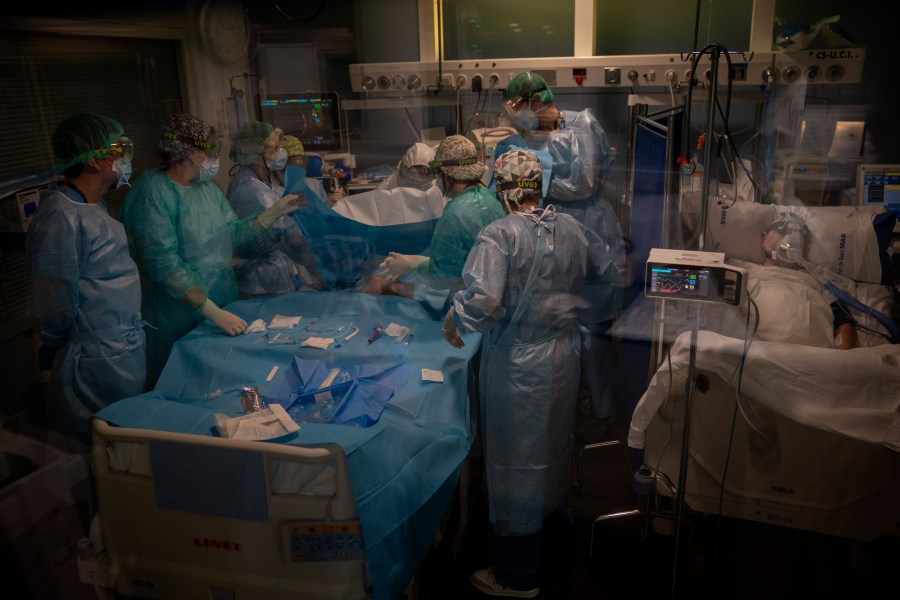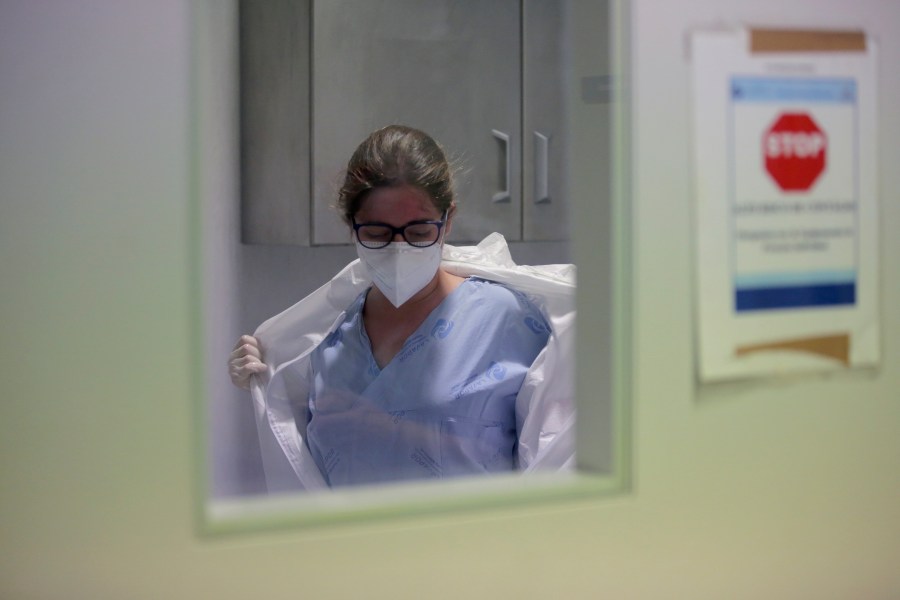Italy shuts down 4 regions as Europe tries lighter lockdowns

Women walk in the Vittorio Emanuele II gallery shopping arcade in Milan, Italy, Friday, Nov. 6, 2020. Lombardy is among the four Italian regions classified as red zones, where a strict lockdown was imposed starting Friday – to be reassessed in two weeks – in an effort to curb the COVID-19 infections growing curve. Starting today, only shops selling food and other essentials are allowed to open. (AP Photo/Antonio Calanni)
MILAN (NewsNation Now) — Luxury fashion boutiques, jewelry shops and most of Milan’s flagship department were shuttered Friday, as the center of Italy’s vibrant financial capital fell into a gray quiet on the first day of a partial lockdown in four regions aimed at stopping coronavirus.
The new restrictions — which led to closures of a patchwork of nonessential businesses — allow a great deal more freedom than Italy’s near-total 10-week lockdown that started in March, but nonetheless brought recriminations from regional governments that feel unfairly targeted. In particular, the south, which was largely spared in the spring, chafed the most, despite concerns that its weaker health care system was especially vulnerable.
Italy’s move echoes those in many parts of Europe, where infections are rising again, but governments have been reluctant to impose the kind of nationwide shutdowns they did in the spring because of the terrible economic damage they did. For instance, many European countries have opted to keep schools open — making work easier for parents — while shutting bars and restaurants and many shops.
Even the lighter restrictions this time around, however, are drawing stiff criticism — especially in countries like Britain and Italy where they have exacerbated regional tensions.
Under Italy’s complicated 21-point formula, the northern regions of Lombardy, Piedmont and Valle d’Aosta and the southern region of Calabria, the toe of Italy’s boot, faced increased restrictions for the next 15 days, including the closure of all nonessential stores, take-out only for bars and restaurants, distance learning for students 12 and over and a ban on leaving hometowns except for work, health or other serious reasons.
Sicily and Puglia, two other southern regions, fell into a second tier of restrictions, while the rest of the country maintained more freedom of movement but with a 10 p.m. curfew and restaurants closings at 6 p.m.
In Rome, Italy’s health minister faced Parliament to defend the government’s handling of the new phase of the crisis amid concerns the government has too often bypassed lawmakers during the pandemic.
“In a great country like Italy, this cannot be the field of a political battle,” Roberto Speranza said, noting that the criteria being applied had been in place since April without dissent. “I say this with all my strength and from my heart: Enough. Don’t fuel polemics.”
Speranza said the lockdowns were a necessity as the number of confirmed infections skyrockets and deaths reach highs not seen since the spring.
In Calabria, the governor vowed to fight the restrictions. And some mayors in the Lombardy in cities that suffered in the first lockdown but are less hard-hit now have pushed for restrictions to vary by province and not by the larger category of region.
Milan’s mayor, Giuseppe Sala, rejected such differential treatment within regions, which share a common health care system. “I invite Milanese to stay home as much as possible in these very difficult days,” Sala said Friday.
All was quiet in the city, where even the lines that usually form in front of popular takeaway sandwich shops — still allowed to be open — were nowhere to be seen. The hodgepodge of shops considered “necessary” includes hairdressers, cosmetic and perfume stores, florists, and sweet shops alongside grocery stores — but not ice cream parlors or pastry shops. That created the odd situation where the flagship Rinascente department store was open only to customers wanting to access the ground floor for cosmetics, the 7th-floor food court or the penthouse hair salon.
That patchwork reflects efforts to balance slowing the virus’s spread with protecting the battered economy — and it can be seen across Europe. Many fear that businesses that suffered in the spring won’t survive new restrictions this time around.
In France, bookshops have been shut, and Paris’ landmark English-language store Shakespeare and Company appealed to readers for support. And it got it, receiving 5,000 online orders in one week, compared with the usual 100.
But even as politicians keep a wary eye on the economy, they are also concerned about pressure on their strained health systems.
Luca Zaia, governor of the northern Italian region of Veneto region, said that the deaths in his region were mostly among people over 70 while most infections were among the young, underlining the necessity for people to observe new rules even in one of the regions with the lightest restrictions.
“We are entering the most critical phase,’’ Zaia said, noting that if the situation worsens they will have to halt other medical procedures to find beds for COVID-19 patients.
Germany’s health minister has warned of hard times ahead unless the country can “break” the rising trajectory of coronavirus cases.
And the French government is supplying quick virus tests to nursing homes around the country and to the nation’s biggest airport, Paris’ Charles de Gaulle. The tests are cheap and fast, but experts say they are also less accurate than the standard ones. Nursing homes in France, Spain and other European countries saw tremendous numbers of deaths in the first wave.
“The second wave is here, and it is violent,” French Health Minister Olivier Veran warned Thursday night, while urging people to respect a partial national lockdown.
In Denmark, meanwhile, more than a quarter-million people were put on lockdown in a northern region where a mutated variation of the coronavirus infected a mink farm. Although there was no evidence the mutation posed a threat to people, Danish authorities were taking no chances and ordered millions of the animals to be killed.













